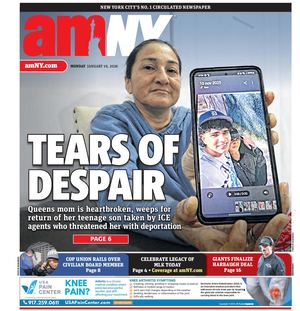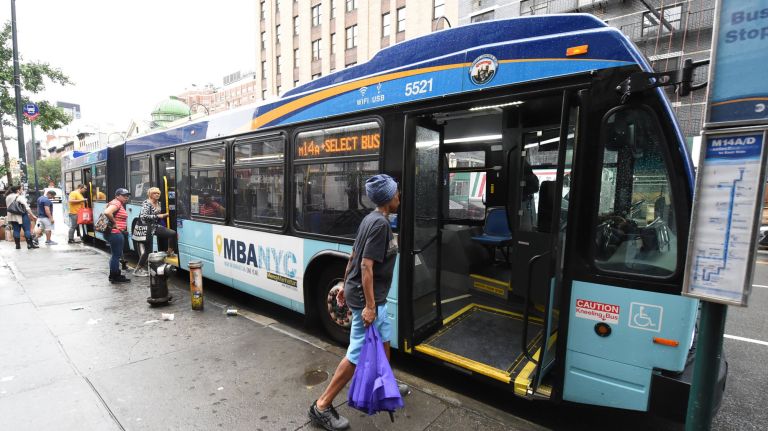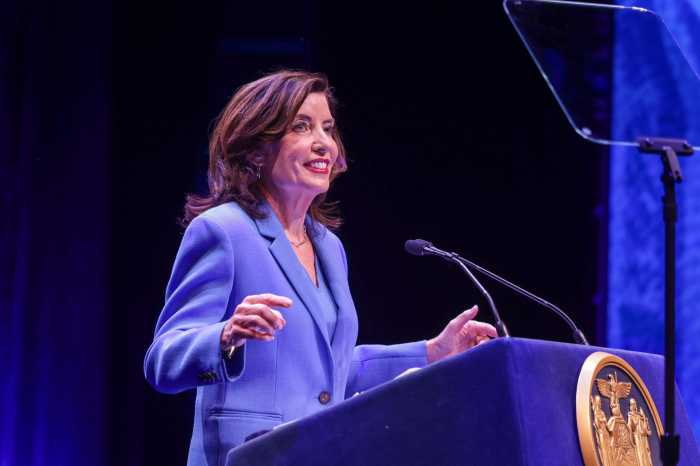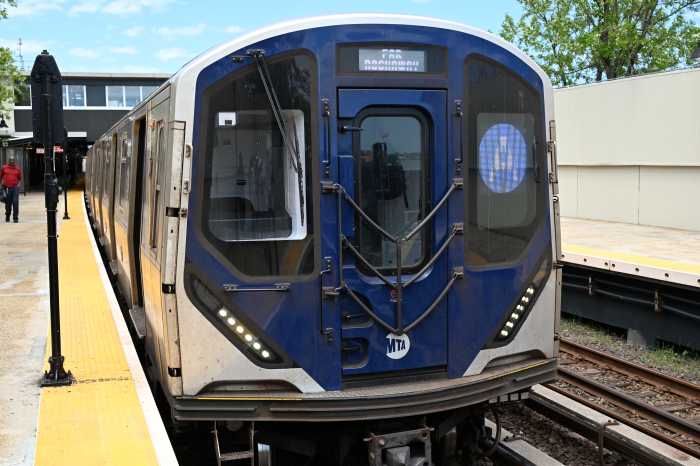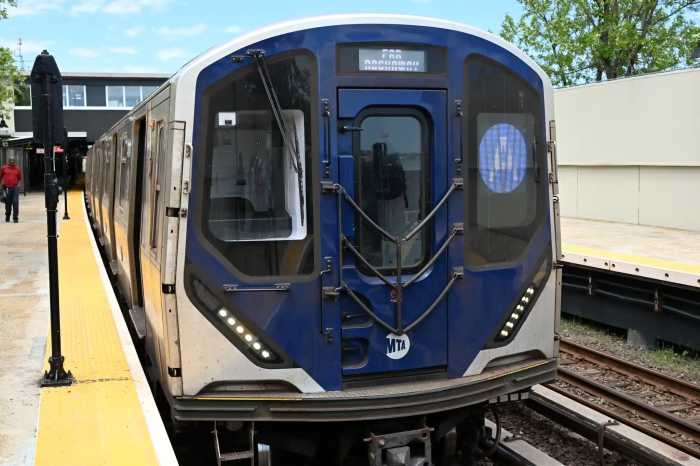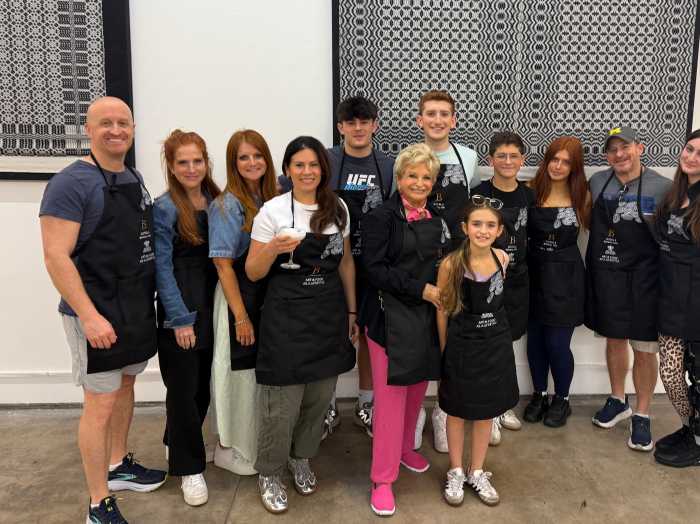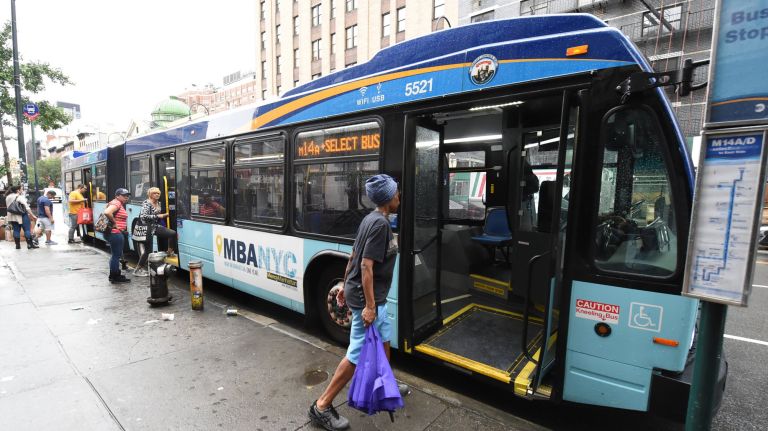
The NYPIRG Straphangers Campaign and TransitCenter announced on Tuesday the winners of the 2019 Pokey and Schleppie Awards, which highlight the slowest and least reliable bus service in the city.
The M14A-SBS, connecting the West Village to the Lower East Side via 14th Street, is the winner of this year’s Pokey Award for the slowest bus service. With an average speed of 4.3 miles per hour, the M14A moves slower than a manatee, which can glide through water at a crisp pace of 5 mph.
“For years, the M14A has been one of the slowest buses in New York City, so this year’s Pokey Award should come as no surprise,” said Jaqi Cohen, campaign director for the NYPIRG Straphangers Campaign.
The M14A managed to snag the dreaded award despite the recent implementation of Select Bus Service, which brought off-board fare payment and bus-stop consolidation to the route. However, a dedicated busway — a key element to speeding up service — has been delayed by a lawsuit related to the L train tunnel reconstruction project.
“The recent implementation of SBS along the route has been a welcome change for M14 riders,” Cohen added. “Still, there is no better way to speed up service along the route than by rolling out the red carpet for bus riders with a dedicated busway.”
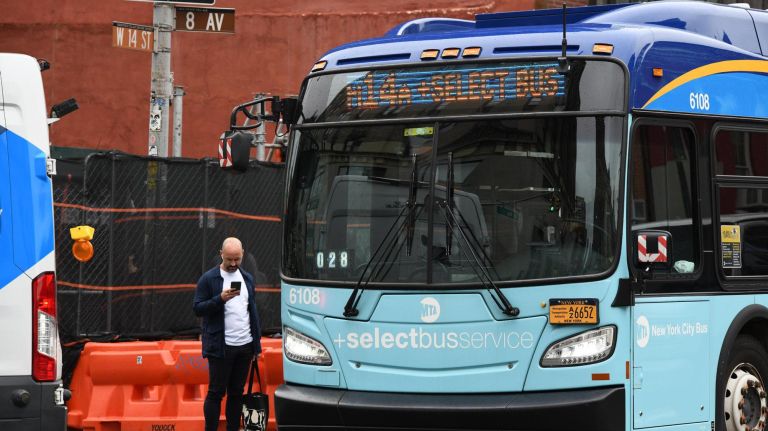
MTA communications director Tim Minton said improving bus service is one of four main priorities for NYC Transit President Andy Byford.
"We’re redesigning the bus network in every borough, building a state-of-the-art new command center to better manage service, and modernizing our fleet with reliable new buses that are the most accessible, clean-running and advanced in history," Minton said. "As part of the redesign, we’re assessing where new residential and commercial development has impacted bus routes. The commonsense objective is to make routes more direct and serve more New Yorkers so that our buses can get them to their destinations faster."
The MTA’s efforts thus far include implementing traffic signal priority technology on the B35 route, introducing a contra-flow bus lane to improve B6 travel to Rockaway Parkway subway station, and completing a new bus command center with upgraded technology to improve real-time service tracking.
Some riders, however, said the only change they see is growing impatience.
East Village resident Sophie Maerowitz, 30, regularly rides the M14D. While the Pokey Awards research indicates this bus has an average speed of 4.6 mph, she described the pace as a "snail on Nyquil."
"I took it from Seventh Avenue and I think it took me about 30 minutes to get to Union Square a few weeks ago," she said. "I get really frustrated. … I really like to take it when it’s cold out or raining, but unfortunately I can’t rely on it. The bunching is a huge problem. There are four of them sometimes at the same stop and you’ve been waiting for 15, 17 minutes."
Last year’s winner of the Pokey Award, the M42, also received an accolade this year: the new Lifetime Depreciation Award, which highlights a bus route that has seen a significant drop in ridership because of consistently poor service.
The M42, with an average speed of 3.5 mph, has won the Pokey Award five times. By comparison, the average walking speed is about 3.1 mph. Ridership on the route has dropped so low that it was not eligible this year for the Pokey Award, which requires a route to have a minimum daily ridership of 10,000.
Commuters in Brooklyn, meanwhile, are subject to the least reliable service in the city, with the B15 taking home this year’s Schleppie Award.
Chelsea resident Melodie Bryant, 70, tries to walk or ride her bike as often as possible to avoid taking the M14 — a service she said is "completely unreliable."
"I wish I could say there was one final straw, but every ride was the final straw and eventually they mounded up and I just gave up," she said. "The outer boroughs absolutely need more bus service there’s no question, but Manhattan is already laid out. We already have the infrastructure and everything. What we don’t have is the leadership."
The groups determine a route’s reliability by monitoring the number of buses that bunch, which is when two or more buses arrive at a stop at the same time. When buses bunch, riders often have to wait longer before the next bus comes along.
About 20% of B15 buses, which connect riders between Bedford-Stuyvesant and Kennedy Airport, were observed bunching.
“It’s extremely frustrating to wait twice as long for a B15, only to see two show up at the same time,” said Mary Buchanan, research associate at TransitCenter. “What makes it even more aggravating is that we know the solution: dedicated, enforced bus lanes would un-bunch even the B15.”
One positive, the groups noted, was that the number of bus routes eligible for the Schleppie Award this year decreased, compared with 2018.
